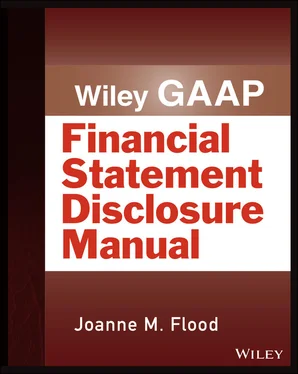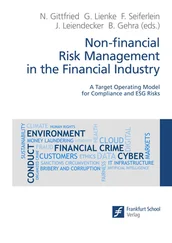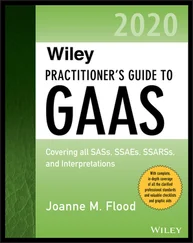Amount of net income and comprehensive income attributable to the parent.
Amount of net income and comprehensive income attributable to the noncontrolling interest in a less‐than‐wholly‐owned subsidiary.(ASC 220‐10‐45‐5)
The Order of Presentation and HeadingsThe basic order of presentation of information in an income statement (or statement of income and comprehensive income) is defined by other accounting topics, as shown in Example 5.1 later in this chapter. Other than in the section “income from continuing operations,” the display of revenues, expenses, gains, losses, and other comprehensive income is predetermined by the Codification guidance. Only within income from continuing operations do tradition and industry practice determine the presentation.
The three items that are shown in the heading of an income statement are:
1 The name of the entity whose results of operations is being presented.
2 The title of the statement.
3 The period of time covered by the statement.
Entity NameThe entity’s legal name should be used and supplemental information could be added to disclose the entity’s legal form as a corporation, partnership, sole proprietorship, or other form if that information is not apparent from the entity’s name.
Statement TitlesThe use of the titles “Income Statement,” “Statement of Income and Comprehensive Income,” “Statement of Operations,” or “Statement of Earnings” denotes preparation in accordance with GAAP. If another comprehensive basis of accounting were used, such as the cash or income tax basis, the title of the statement would be modified accordingly. “Statement of Revenue and Expenses—Income Tax Basis” or “Statement of Revenue and Expenses—Modified Cash Basis” are examples of such titles.
Statement DateThe date of an income statement must clearly identify the time period involved, such as “Year Ending March 31, 20X1.” That dating informs the reader of the length of the period covered by the statement and both the starting and ending dates. Dating such as “The Period Ending March 31, 20X1” or “Through March 31, 20X1” is not useful because of the lack of precision in those titles. Income statements are rarely presented for periods in excess of one year but are frequently seen for shorter periods such as a month or a quarter. Entities whose operations form a natural cycle may have a reporting period end on a specific day (e.g., the last Friday of the month). These entities should head the income statement “For the 52 Weeks Ended March 29, 20X1” (each week containing seven days, beginning on a Saturday and ending on a Friday). Although that fiscal period includes only 364 days (except for leap years), it is still considered an annual reporting period.
Consistency of FormIncome statements generally should be uniform in appearance from one period to the next. The form, terminology, captions, and pattern of combining insignificant items should be consistent. If comparative statements are presented, the prior year’s information should be restated to conform to the current year’s presentation if changes in presentation are made.
AggregationThe level of disaggregation is a matter of judgment. It should be efficient to give to readers meaningful information. Aggregation of items should not serve to conceal significant information, such as netting revenues against expenses or combining dissimilar types of revenues, expenses, gains, or losses. Although the Codification does not offer benchmarks for disaggregation of income items, the SEC's Division of Corporate Finance's Form and Content of and Requirements for Financial Statements, Regulation S‐X 5‐03(1) does require separate presentation for some items that exceed 10% of total revenue. Those items include net sales of tangible products, service revenue, rental income, operating revenue of public utilities or others, and other revenues. The SEC also requires the costs and expenses related to those items to be presented separately. 1 Non‐SEC preparers may want to consider those thresholds when deciding which amounts to disaggregate. Any benchmarks used should be applied consistently.
The category “other or miscellaneous expense” should contain, at maximum, an immaterial total amount of aggregated insignificant items. Once this total approaches a material amount of total expenses, some other aggregations with explanatory titles should be selected.
Income from Continuing OperationsThe section “income from continuing operations” includes all revenues, expenses, gains, and losses that are not required to be reported in other sections of an income statement.
There are two generally accepted formats for the presentation of income from continuing operations:
Single‐step and
Multiple‐step
Single‐Step FormatIn the single‐step format, items are classified into two groups: revenues and expenses. The operating revenues and other revenues are itemized and summed to determine total revenues. The cost of goods sold, operating expenses, and other expenses are itemized and summed to determine total expenses. The total expenses (including income taxes) are deducted from the total revenues to arrive at income from continuing operations.
Multiple‐Step FormatIn a multiple‐step format, operating revenues and expenses are separated from nonoperating revenues and expenses to provide more information concerning the firm's primary activities. This format breaks the revenue and expense items into various intermediate income components so that important relationships can be shown and attention can be focused on significant subtotals. Some examples of common income components are as follows:
1 Gross profit (margin)
2 Operating income
3 Income before income taxes
Income from Continuing OperationsThe following items of revenue, expense, gains, and losses are included within income from continuing operations:
1 Sales or service revenues
2 Cost of goods sold
3 Operating expenses
4 Gains and losses
5 Other revenues and expenses
6 Unusual and/or infrequently occurring
7 Goodwill impairment losses
8 Exit or disposal activity costs
9 Income tax expense
Net IncomeThe section ends in a subtotal that varies depending upon the existence of discontinued operations. Net income reflects all items of profit and loss recognized during the period, except for error corrections. (ASC 220‐10‐45‐7A) The requirement that net income be presented as one amount does not apply to those entities that have statements different in format from commercial enterprises:
Investment companies.
Insurance entities.
Certain not‐for‐profit entities (NFPs).
(ASC 220‐10‐45‐7A)
Items of Other Comprehensive IncomeASC 220‐10‐45‐10A lists the following as items currently within other comprehensive income:
Foreign currency translation adjustments (see paragraph 830‐30‐45‐12).
Gains and losses on foreign currency transactions that are designated as, and are effective as, economic hedges of a net investment in a foreign entity, commencing as of the designation date (see paragraph 830‐20‐35‐3(a)).
Gains and losses on intra‐entity foreign currency transactions that are of a long‐term investment nature (that is, settlement is not planned or anticipated in the foreseeable future), when the entities to the transaction are consolidated, combined, or accounted for by the equity method in the reporting entity's financial statements (see paragraph 830‐20‐35‐3(b)).
The difference between changes in fair value of the excluded components of derivatives designated in qualifying hedges and the initial value of the excluded components recognized in earnings under a systematic and rational method. 2
Читать дальше












